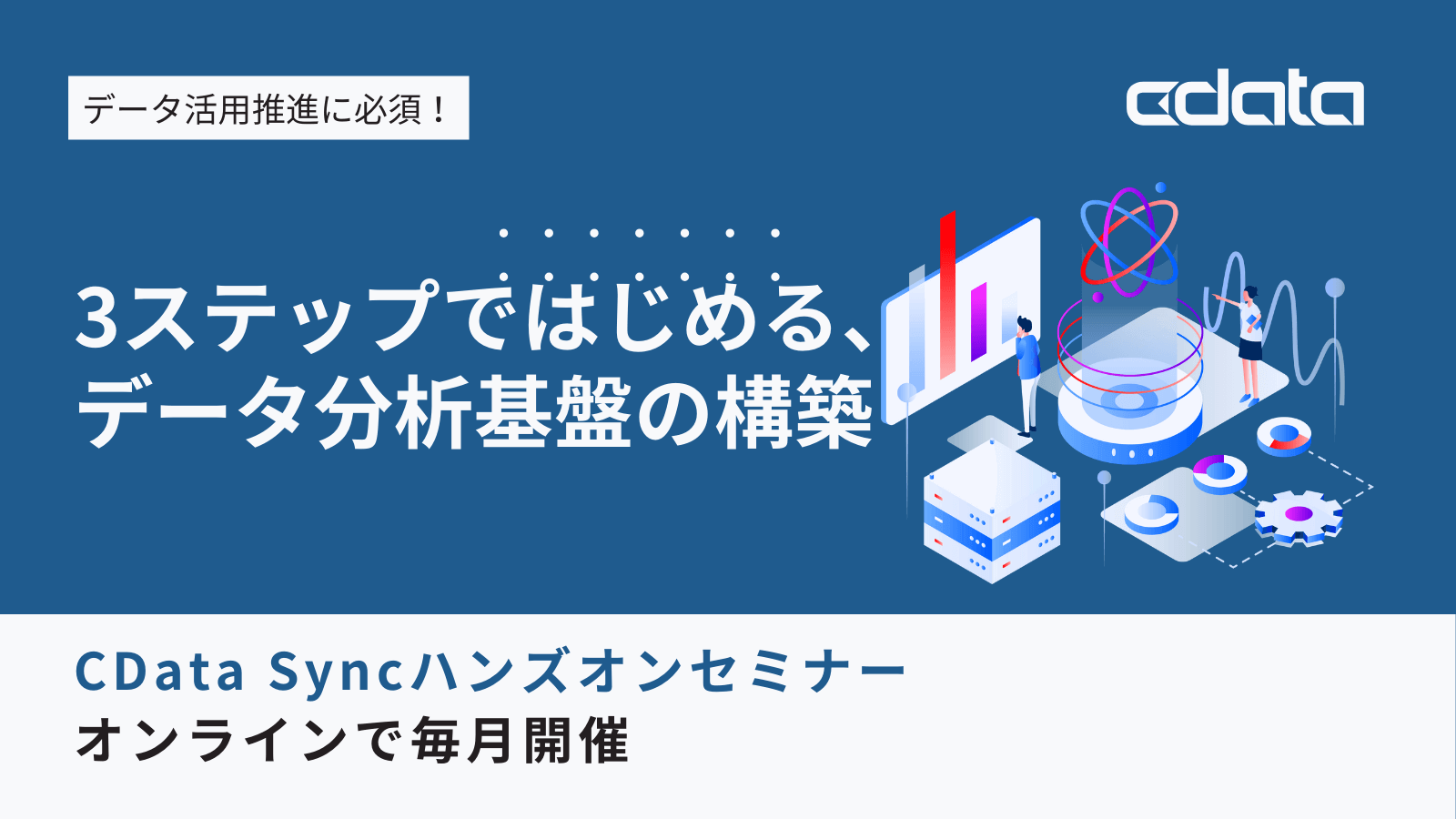ノーコードでクラウド上のデータとの連携を実現。
詳細はこちら →CData Software Japan - ナレッジベース
Latest Articles
- MySQL のデータをノーコードでREST API として公開する方法:CData API Server
- CData Sync AMI をAmazon Web Services(AWS)で起動
- Connect Cloud Guide: Derived Views, Saved Queries, and Custom Reports
- Connect Cloud Guide: SSO (Single Sign-On) and User-Defined Credentials
- Connect Cloud クイックスタート
- Shopify APIのバージョンアップに伴う弊社製品の対応について
Latest KB Entries
- DBAmp: Serial Number Expiration Date Shows 1999 or Expired
- CData Drivers のライセンスについて
- Spring4Shell に関する概要
- Update Required: HubSpot Connectivity
- CData Sync で差分更新を設定
- Apache Log4j2 Overview
ODBC Drivers
- [ article ] Linux/UNIX 上のPython からRSS データにデータ連携
- [ article ] Exploratory でSnowflake データを連携する方法
- [ article ] SAS でCData Software ODBC Driver for Google Data ...
- [ article ] Delphi のStripe データへのデータバインドコントロール
JDBC Drivers
- [ article ] TaxJar データをASTERIA Warp に繋いでみた
- [ article ] SnapLogic でLDAP を外部サービスに連携
- [ article ] SpagoBI でShopify に連携
- [ article ] Mule アプリケーションからAccess データにアクセス:CData JDBC Driver
SSIS Components
- [ article ] SSIS を使ってQuickBooks POS データをSQL Server にインポート
- [ article ] SSIS を使ってZendesk データをSQL Server にインポート
- [ article ] Business b-ridge をSSIS 経由でSQL サーバーにバックアップする
- [ article ] Impala データからSQL Server ...
ADO.NET Providers
- [ article ] Infragistics XamDataGrid を使用してTrello ...
- [ article ] Sybase データをDevExpress Data Grid にデータバインドする。
- [ article ] Google Drive データを使ったCrystal Reports を発行
- [ article ] PowerBuilder からSansan データに接続してみた
Excel Add-Ins
- [ article ] PHP でMySQL からSharePoint Excel Services データにアクセス
- [ article ] Excel を使ってNeo4J にデータを追加したり、Neo4J のデータを編集する方法
- [ article ] Excel Online ODBC データソースとの間にInformatica マッピングを作成
- [ article ] SharePoint Excel Services からCData ODBC Driver for ...
API Server
- [ article ] SAP HANA へのOData データのETL/ELT パイプラインを作ってデータを統合する方法
- [ article ] JDBC データソースでOData との間にInformatica マッピングを作成
- [ article ] Linux/Unix 上でPHP からOData のデータに接続・連携
- [ article ] クラウドRPA BizteX Connect でExcel データにアクセス
Data Sync
- [ article ] Excel Online データを複数のデータベースにレプリケーション。
- [ article ] OneNote データからSQL Server ...
- [ article ] Amazon Redshift へのMySQL データのETL/ELT ...
- [ article ] Azure Synapse へのPipedrive データのETL/ELT ...
Windows PowerShell
- [ article ] Google Cloud Storage データをPowerShell script でSQL ...
- [ article ] Odoo データをPowerShell でMySQL にレプリケーションする方法
- [ article ] Neo4J データをPowerShell script でSQL Server ...
- [ article ] PowerShell を使ってZoho CRM データをSQL Server にレプリケーション
FireDAC Components
- [ article ] Delphi のCouchDB データへのデータバインドコントロール
- [ article ] Delphi のSnapchat Ads データへのデータバインドコントロール
- [ article ] Delphi のBasecamp データへのデータバインドコントロール
- [ article ] Delphi のBigQuery データへのデータバインドコントロール






